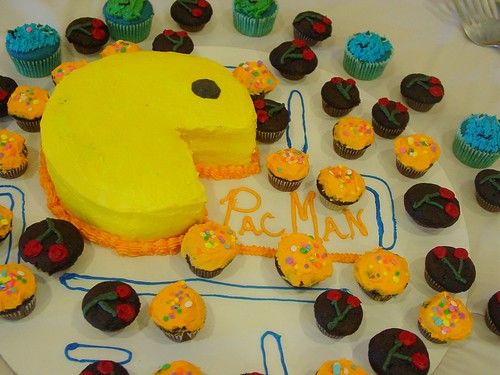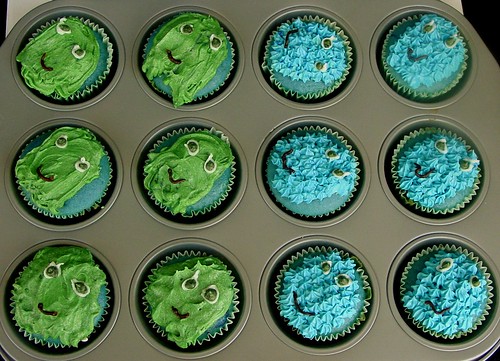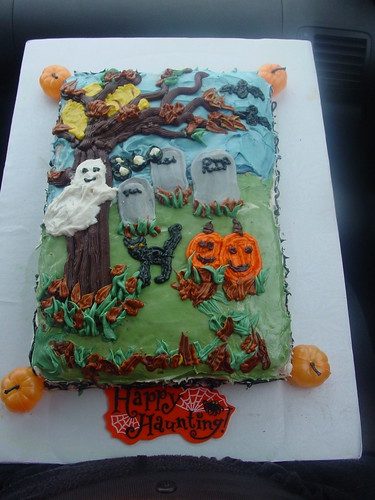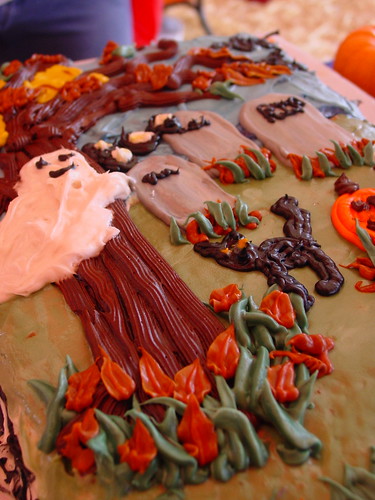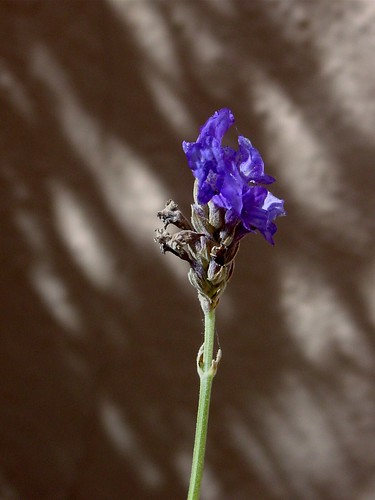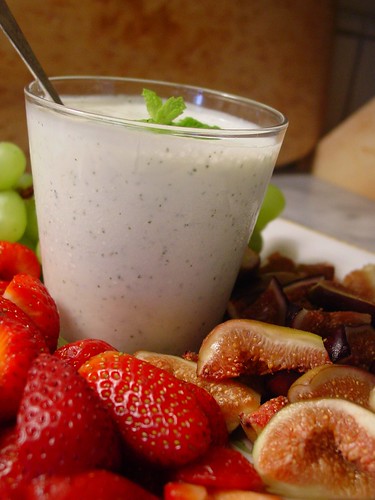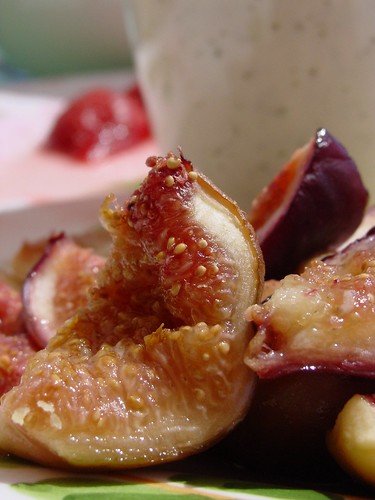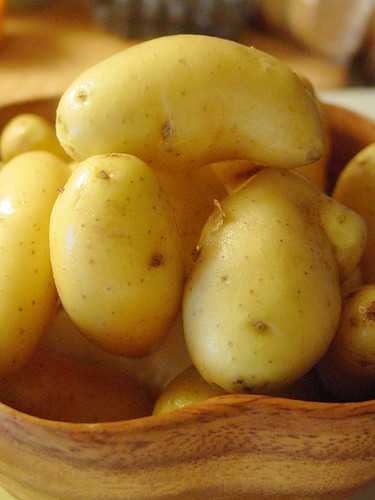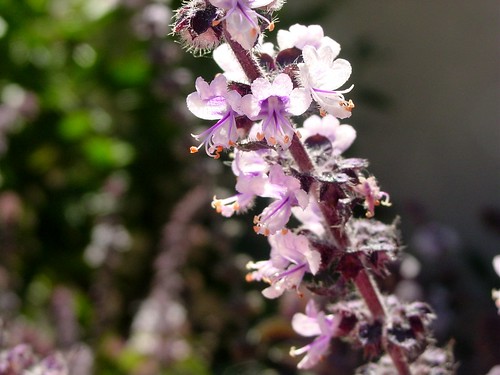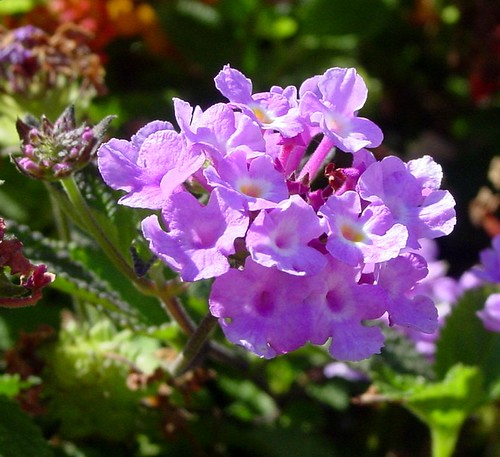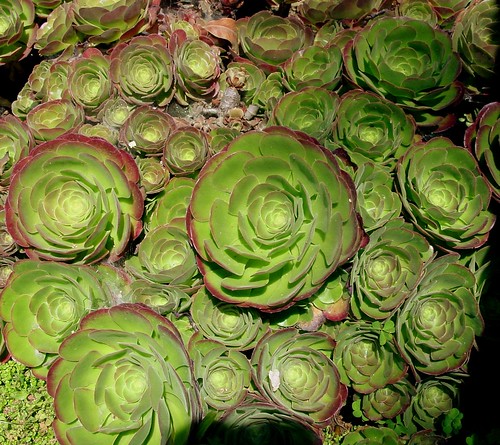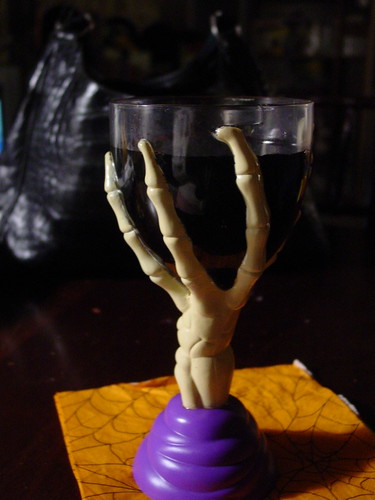
Tuesday, October 31, 2006
Monday, October 30, 2006
RECIPE: Pate On Pear Slices
Pate On Pear Slices
3 to 4 crisp pears
Chicken liver pate
No more than 20 minutes before serving, core the pears and cut in half lengthwise. Place each half cut-side down and slice crosswise ¼” thick. Spread pate on the slices. Makes 2 dozen.
3 to 4 crisp pears
Chicken liver pate
No more than 20 minutes before serving, core the pears and cut in half lengthwise. Place each half cut-side down and slice crosswise ¼” thick. Spread pate on the slices. Makes 2 dozen.
Saturday, October 28, 2006
Sunday, October 22, 2006
WEEKEND BABY BLOGGING - WBB#20 Something
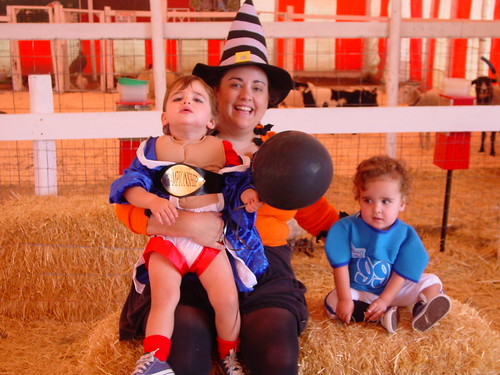
Yes, it has been ages since I posted a picture of my babies.
Last weekend we had the Twin Club Halloween party. I was my usual Witchy self. Timmy was a football player. He fell and his lip got a little bloody. He was fine way before I was about it. And of course it went with his costume. Xander was Sugar Ray Leonard. And for the record, no punching was actually allowed much less attempted.
ENTERTAINING: Halloween Cake!
HOLIDAY: Halloween is October 31
Halloween History
Halloween blends the traditions of the Celts, Romans, Catholics and Protestants. On October 31, the Celts celbreated the onset of winter by hostinga New Year's festival in honor of Samhain, the Lord of the Dead. It was the holiest day of the year, linking the living with the dead. Even though the souls could cause danger they also supplied omens that could be read more clearly during the feast. The Samhain, assembled all the souls in order to sentence the sinniners to one year in the shape of an animal while the good souls could take the shape of a human. The Celts wanted to please Samhain on this night so he would allow the souls of their relatives to return home and get warm by the fire while keeping the evil spirits at bay who otherwise would destroy crops and kill animals. The villagers would dress up as animals and dance around the fires and then form a parade and lead the evil souls to the outskirts of town. On November 1, the Romans held a feast in honor of Pomona, the Goddess of the orchards and harvest. The apple was dedicated to her as a symbol of fertility and love. By the 1 century A.D., the Samhain and Pomona festivals had merged into one, celebrating the harvest and asking for protection from evil spirits. Once Roman Emperor Constantine became a Christian, Christianity spread throughout the Empire during the 1-4th Centuries. The Church had to convert the people from pantheistic to monotheistic ideology. The early popes were pivotal in ensuring this by gradually incorporating elements of the pagan rituals into Christianity so the pagans would not feel alienated but embraced by the Church. In 610, Pope Boniface IV, created All Saints’ Day to commemorate all early Christian martyrs. In 740, Pope Gregory III moved All Saints’ Day to November 1st, to coincide with Samhain so the people could still celebrate the dead but with a Christian slant. In 834, Pope Gregory IV extended the holiday to include all Saints so every church under Roman rule would participate. It was placed in the church books in 993. In 1000, All Souls’ Day was approved for November 2, by Pope Sylvester II to honor the departed. By the 14th Century, it was customary to trick or treat on October 31, All Hallows Eve, marking the three-day feast, Hallowmas. Soul cakes replaced the practice of placing food outside of one’s house and sacrifices to appease the souls. People now wore costumes as tribute to the saints, not to scare the spirits. Bonfires were lit to ward off the devil rather than honor the sun. The Protestants, led by Martin Luther, ceased celebrating the Catholic Saint days on October 31, 1517. The practice of an autumn fest was resurrected in the guise of Guy Fawkes Day, held on November 5. On that day in 1605, the Catholics plotted to blow up the House of Lords, who were pro-Protestant. But, they were caught before it ensued and Guy Fawkes was caught as he was trying to dispose of his gunpowder stash and later he was executed. In 1606, the Parliament declared that day to celebrate the victory over the Catholics. Due to the proximity of Hallowmas, many of the traditions were borrowed and on the eve of Guy Fawkes, which became known as Mischief Night, people carried carved turnips lit with candles as they begged for coal to light bonfires to burn effigies of Guy Fawkes. By the time many English and Irish moved to America, the traditions of Halloween and Mischief Night were so well ingrained in their culture that they brought it with them.
In Brittany, people placed pancakes by the door for the soul's of their family to eat when they rose up from the cold ground on Halloween
Hallowe'en Icons
The Jack O’Lantern finds its roots in Irish folklore. A drunk named Jack was approached by the Devil who wanted his soul. But Jack ran up a tree and when the Devil chased him up it, Jack carved a cross in the bark and the Devil was trapped in the tree. Jack made a deal with the Devil that if he let him down the tree then the Devil was to leave him alone forever. When Jack died, he was denied access to heaven due to his sinful ways so he was sent to Hell but he wasn’t admitted either because of the pact. So, the Devil gave Jack an ember placed inside a hollowed out turnip to light his way through perpetual darkness. The Irish began carving their own turnips and placing a candle in them and carrying them to ward off evil spirits. When Irish immigrants came to America, they discovered that pumpkins were a better size than a turnip for holding a candle.
Costumes were worn by the Druids to disguise themselves so the spirits would think that they were also a soul and leave them alone. The costumes mainly consisted of animal skins and masks to look like animals. They would wear them while dancing around the bonfire and in a parade to lead them out of town.
Bobbing for Apples is rooted in the Roman festival of Pomona. Apples were the sacred fruit of the Roman Goddess, Pomona. Today, we celebrate Pomona by bobbing for apples. If you manage to bit in an apple that is floating in a tub of water then you will have good luck during the coming year.
The Black Cat, Bat, and Owl are Witches’ friends. Witches are thought to gather twice a year when the seasons change, one Halloween and May Day. The word witch is derived from the Old English word “wicca”, meaning to turn or bend. A witch changes or bends events with magic. Black Cats are thought change into witches. Cats can sense both evil and good spirits. They also can embody malevolent spirits. So they are especially dangerous during Halloween when evil spirits are lurking. In the Middle Ages, it was thought that owls were bad spirits, which eat the soul’s of the dying and their cry warned of looming death. Bats were always present during the Witches’ bonfires.
Trick or Treating began as a Celtic tradition and became a Christian one. The Celts placed bowls of food in front of their doors to appease the spirits so they wouldn’t enter the homes and play tricks on them. In 9th Century Europe, early Christians paralleled this tradition by begging for “soul cakes,” square pieces of bread with currants, in return for praying for the donor’s deceased relatives. It was thought that after death, one remained in limbo for a while; these prayers would accelerate the soul’s passage to heaven. Eventually, this evolved into children going from house to house asking for treats.
Have a Halloween party. If your little ones are too young to carve, let them draw the face on the pumpkin. Tell scary ghost stories. Have a pumpkin relay by lining up 2 teams; the first person passes the pumpkin over their head to the next person who passes it on under their legs, and so on. When you get to the end of the line, the last person runs up to the front with the pumpkin and starts all over again until the person who was first in line returns to the front of the line. Whichever line manages this first wins. Then bob for apples so you and your friends will have good luck for the year to come. Don’t forget to put on your costume and go trick or treating!
Halloween blends the traditions of the Celts, Romans, Catholics and Protestants. On October 31, the Celts celbreated the onset of winter by hostinga New Year's festival in honor of Samhain, the Lord of the Dead. It was the holiest day of the year, linking the living with the dead. Even though the souls could cause danger they also supplied omens that could be read more clearly during the feast. The Samhain, assembled all the souls in order to sentence the sinniners to one year in the shape of an animal while the good souls could take the shape of a human. The Celts wanted to please Samhain on this night so he would allow the souls of their relatives to return home and get warm by the fire while keeping the evil spirits at bay who otherwise would destroy crops and kill animals. The villagers would dress up as animals and dance around the fires and then form a parade and lead the evil souls to the outskirts of town. On November 1, the Romans held a feast in honor of Pomona, the Goddess of the orchards and harvest. The apple was dedicated to her as a symbol of fertility and love. By the 1 century A.D., the Samhain and Pomona festivals had merged into one, celebrating the harvest and asking for protection from evil spirits. Once Roman Emperor Constantine became a Christian, Christianity spread throughout the Empire during the 1-4th Centuries. The Church had to convert the people from pantheistic to monotheistic ideology. The early popes were pivotal in ensuring this by gradually incorporating elements of the pagan rituals into Christianity so the pagans would not feel alienated but embraced by the Church. In 610, Pope Boniface IV, created All Saints’ Day to commemorate all early Christian martyrs. In 740, Pope Gregory III moved All Saints’ Day to November 1st, to coincide with Samhain so the people could still celebrate the dead but with a Christian slant. In 834, Pope Gregory IV extended the holiday to include all Saints so every church under Roman rule would participate. It was placed in the church books in 993. In 1000, All Souls’ Day was approved for November 2, by Pope Sylvester II to honor the departed. By the 14th Century, it was customary to trick or treat on October 31, All Hallows Eve, marking the three-day feast, Hallowmas. Soul cakes replaced the practice of placing food outside of one’s house and sacrifices to appease the souls. People now wore costumes as tribute to the saints, not to scare the spirits. Bonfires were lit to ward off the devil rather than honor the sun. The Protestants, led by Martin Luther, ceased celebrating the Catholic Saint days on October 31, 1517. The practice of an autumn fest was resurrected in the guise of Guy Fawkes Day, held on November 5. On that day in 1605, the Catholics plotted to blow up the House of Lords, who were pro-Protestant. But, they were caught before it ensued and Guy Fawkes was caught as he was trying to dispose of his gunpowder stash and later he was executed. In 1606, the Parliament declared that day to celebrate the victory over the Catholics. Due to the proximity of Hallowmas, many of the traditions were borrowed and on the eve of Guy Fawkes, which became known as Mischief Night, people carried carved turnips lit with candles as they begged for coal to light bonfires to burn effigies of Guy Fawkes. By the time many English and Irish moved to America, the traditions of Halloween and Mischief Night were so well ingrained in their culture that they brought it with them.
In Brittany, people placed pancakes by the door for the soul's of their family to eat when they rose up from the cold ground on Halloween
Hallowe'en Icons
The Jack O’Lantern finds its roots in Irish folklore. A drunk named Jack was approached by the Devil who wanted his soul. But Jack ran up a tree and when the Devil chased him up it, Jack carved a cross in the bark and the Devil was trapped in the tree. Jack made a deal with the Devil that if he let him down the tree then the Devil was to leave him alone forever. When Jack died, he was denied access to heaven due to his sinful ways so he was sent to Hell but he wasn’t admitted either because of the pact. So, the Devil gave Jack an ember placed inside a hollowed out turnip to light his way through perpetual darkness. The Irish began carving their own turnips and placing a candle in them and carrying them to ward off evil spirits. When Irish immigrants came to America, they discovered that pumpkins were a better size than a turnip for holding a candle.
Costumes were worn by the Druids to disguise themselves so the spirits would think that they were also a soul and leave them alone. The costumes mainly consisted of animal skins and masks to look like animals. They would wear them while dancing around the bonfire and in a parade to lead them out of town.
Bobbing for Apples is rooted in the Roman festival of Pomona. Apples were the sacred fruit of the Roman Goddess, Pomona. Today, we celebrate Pomona by bobbing for apples. If you manage to bit in an apple that is floating in a tub of water then you will have good luck during the coming year.
The Black Cat, Bat, and Owl are Witches’ friends. Witches are thought to gather twice a year when the seasons change, one Halloween and May Day. The word witch is derived from the Old English word “wicca”, meaning to turn or bend. A witch changes or bends events with magic. Black Cats are thought change into witches. Cats can sense both evil and good spirits. They also can embody malevolent spirits. So they are especially dangerous during Halloween when evil spirits are lurking. In the Middle Ages, it was thought that owls were bad spirits, which eat the soul’s of the dying and their cry warned of looming death. Bats were always present during the Witches’ bonfires.
Trick or Treating began as a Celtic tradition and became a Christian one. The Celts placed bowls of food in front of their doors to appease the spirits so they wouldn’t enter the homes and play tricks on them. In 9th Century Europe, early Christians paralleled this tradition by begging for “soul cakes,” square pieces of bread with currants, in return for praying for the donor’s deceased relatives. It was thought that after death, one remained in limbo for a while; these prayers would accelerate the soul’s passage to heaven. Eventually, this evolved into children going from house to house asking for treats.
Have a Halloween party. If your little ones are too young to carve, let them draw the face on the pumpkin. Tell scary ghost stories. Have a pumpkin relay by lining up 2 teams; the first person passes the pumpkin over their head to the next person who passes it on under their legs, and so on. When you get to the end of the line, the last person runs up to the front with the pumpkin and starts all over again until the person who was first in line returns to the front of the line. Whichever line manages this first wins. Then bob for apples so you and your friends will have good luck for the year to come. Don’t forget to put on your costume and go trick or treating!
Saturday, October 21, 2006
ENTERTAINING: Fun with Fondue - Dessert Fondue That Is
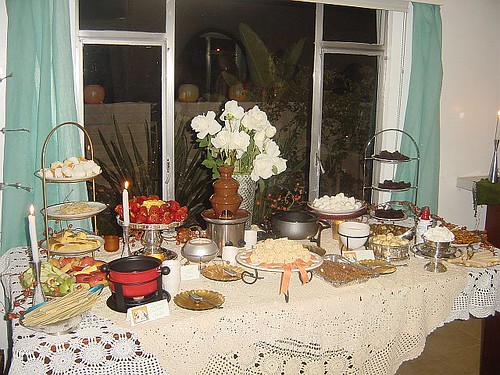
A fondue party is one of the easiest ways to throw a dessert party. For a recent twin club event we had a desert fondue party. It was a huge success. Everyone brought a various array of things to be dipped. One friend brought lots of milk chocolate fondue to fill her fondue fountain. I made four other fondues - Dark Chocolate Fondue, Chocolate Creamy Raspberry Fondue, Toffee Caramel Fondue, and White Chocolate and Cardamom Fondue.
My biggest suggestion is to buy little cups - paper cups - so your guests can spoon in the various fondues into them so they can take their plates of fondue with them and mingle. This way they can dip their dippers into the litle cups without all the fondues running into eachother.
Friday, October 20, 2006
RECIPE: Caramel Toffee Fondue
Caramel Toffee Fondue
Serves 6
1/2 cup butter2 cups dark brown sugar
1/4 cup white corn syrup
1/2 cup caramel2 tablespoons water
14 ounces sweetened condensed milk
2 tablespoons pear liqueur
1 teaspoon vanilla extract
Melt the butter in a saucepan. Add the rest of the ingredients except the extract. Let cook, stirring occasionally until it starts to bubble and darken a bit/ Then add the vanilla extract. Place in a fondue pot to keep warm.
RECIPE: Creamy Raspberry Chocolate Fondue
Raspberry Chocolate Fondue
Serves 8
1 1/2 pounds fresh or frozen berries, (strawberries and raspberries are best)1/4 cup sugar
1/2 teaspoon ground ginger
12 ounces white chocolate
1/2 cup cream
6 ounces semi-sweet chocolate
2 tablespoons butter
1 tablespoon cornstarch
In a saucepan add the frozen berries, sugar and ginger. Bring to a boil, stirring occasionally. Push through a very fine sieve. Discard the solids.
In a saucepan add, all the ingredients and stir together. Warm over medium low heat, stirring occasionally. Transfer to a warm fondue pot.
Serves 8
1 1/2 pounds fresh or frozen berries, (strawberries and raspberries are best)1/4 cup sugar
1/2 teaspoon ground ginger
12 ounces white chocolate
1/2 cup cream
6 ounces semi-sweet chocolate
2 tablespoons butter
1 tablespoon cornstarch
In a saucepan add the frozen berries, sugar and ginger. Bring to a boil, stirring occasionally. Push through a very fine sieve. Discard the solids.
In a saucepan add, all the ingredients and stir together. Warm over medium low heat, stirring occasionally. Transfer to a warm fondue pot.
RECIPE: Dark Chocolate Fondue Recipe
Dark Chocolate Fondue Recipe
Serves 6 or more
1 cup heavy cream1/4 tablespoons Kahlua
6 ounces semi-sweet chocolate, chopped
3 1/2 ounces dark chocolate, chopped
1 teaspoon ground cinnamon
3/4 cup cream
2 tablespoons butter1 teaspoon vanilla
Heat the cream and Kahlua in a medium saucepan over medium-low heat until hot, about 2 to 3 minutes. When hot, add the chocolate, cinnamon, and butter. Stir until it is just melted and smooth. Stir in vanilla. Transfer to a warm ceramic fondue pot.
Serves 6 or more
1 cup heavy cream1/4 tablespoons Kahlua
6 ounces semi-sweet chocolate, chopped
3 1/2 ounces dark chocolate, chopped
1 teaspoon ground cinnamon
3/4 cup cream
2 tablespoons butter1 teaspoon vanilla
Heat the cream and Kahlua in a medium saucepan over medium-low heat until hot, about 2 to 3 minutes. When hot, add the chocolate, cinnamon, and butter. Stir until it is just melted and smooth. Stir in vanilla. Transfer to a warm ceramic fondue pot.
RECIPE: White Chocolate Fondue Recipe
White Chocolate Fondue Recipe
Serves 6 or more
3/4 cup heavy cream12 ounces white chocolate, chopped
1/2 teaspoon ground cardamom1 teaspoon vanilla
Heat the cream in a medium saucepan over medium-low heat until hot, about 2 to 3 minutes. When hot, add the white chocolate and ground cardamom and stir until it is just melted and smooth. Stir in vanilla. Transfer to a warm fondue pot.
Serves 6 or more
3/4 cup heavy cream12 ounces white chocolate, chopped
1/2 teaspoon ground cardamom1 teaspoon vanilla
Heat the cream in a medium saucepan over medium-low heat until hot, about 2 to 3 minutes. When hot, add the white chocolate and ground cardamom and stir until it is just melted and smooth. Stir in vanilla. Transfer to a warm fondue pot.
QUICK COOK RECIPE: Pepper and Corn Soup with Chicken
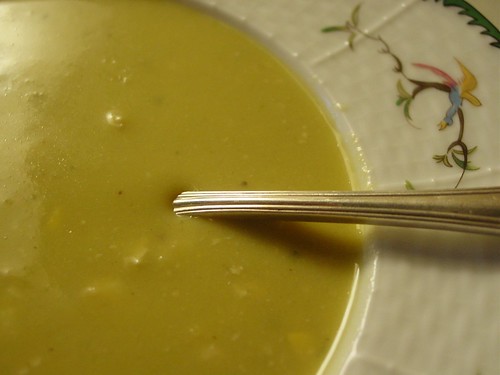
Pepper and Corn Soup with Chicken
1-2 cups leftover chicken
1/2 cup feta cheese
1 teaspoon coriander, ground
1 cup of milk
1 box of Green Pepper and Corn Soup from Trader Joes
Cut up the chicken into small pieces. Dice up the feta cheese. In a souppot, combine the chicken, feta, coriander milk and soup. Heat through and serve.
Thursday, October 19, 2006
RECIPE: Beet Cream Cheese Dip
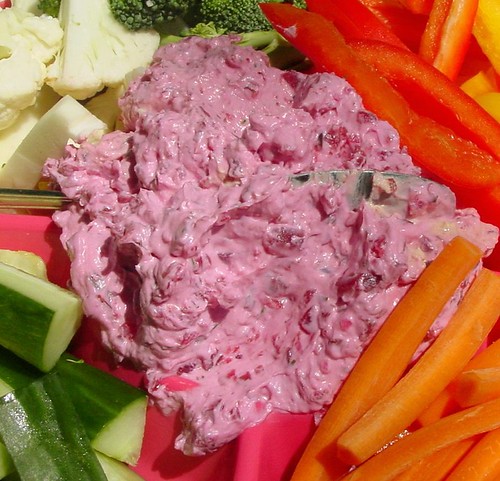
Beet Cream Cheese Dip
1 4-oz can of sliced beets
1 8-oz package of cream cheese
1 teaspoon dill, minced
1/2 teaspoon garlic powder
salt and pepper
This dip can be either smooth or chunky.
If you want it chunky, place the beets on your cutting board and mince and mash with a fork. Discard the beet juice. In a large bowl, combine all the ingredients until fully combined. Serve.
If you want it smooth, place all the ingredients in a food processor. Add 1 tablespoon of the beet juice. Puree until smooth. Serve.
This is so delicious as a dip. It is also fabulous with bagels and smoked salmon. People who think they don’t even like beets usually love this recipe.
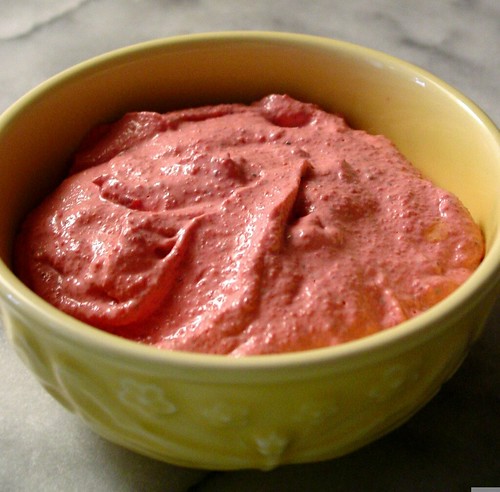
Wednesday, October 18, 2006
PHOTOGRAPHS: La Purisima Mission
A couple of years ago, when the boys were about eight months, my mom flew out to give me and my husband a chance to have a mini-break. It was so strange to leave the boys behind. We had neve even been away from them for more than a few hours and never together. But, we knew it would be good for everyone, especially us, to go on a trip. We chose Santa Barbara. A short drive so we did not feel like we were too far away but far enough that it was not a place we would do a day trip to. We spent many hours walking around on of the most beautiful old missions in California. The La Purisima Mission near Lompoc, CA.
This mission is hidden in the hills of the beautiful wine country of the Santa Barbara valley/Central Coast. There are gorgeous fields to walk around and in February the hills are very green as the hot California sun has not turned the green into golden rolling hills of dried grasses. The day might be hot but the thick stone walls keep the interiors so cool. I went later in the year during the heat of the summer and it was still cool inside.
Here are some snapshots of the beautiful old buildings.
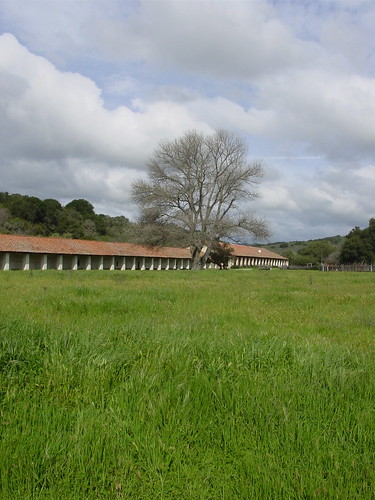
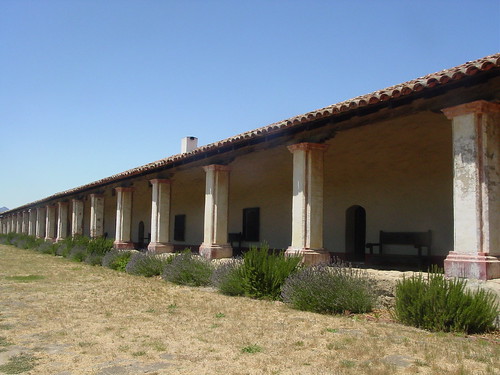
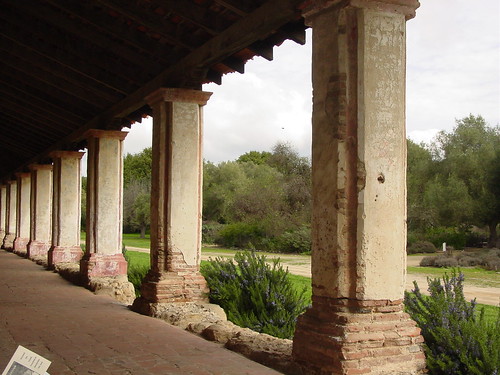
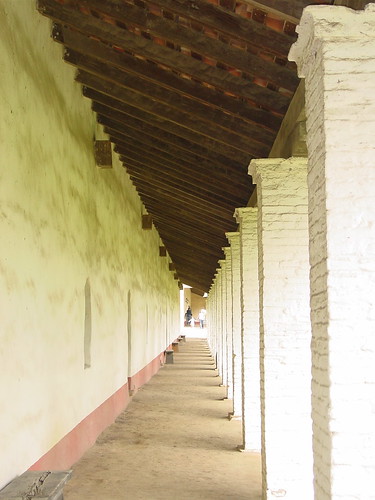
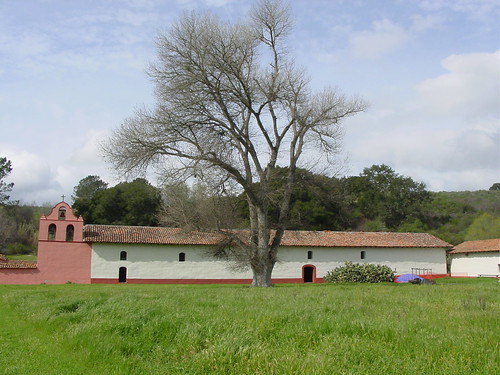
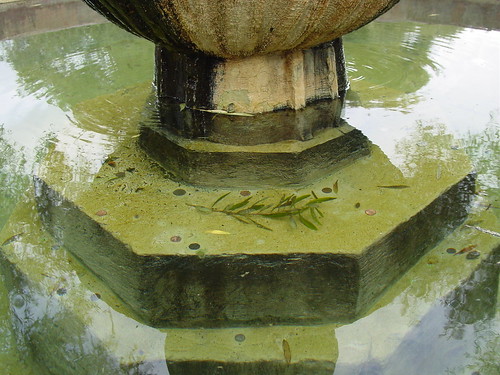
This mission is hidden in the hills of the beautiful wine country of the Santa Barbara valley/Central Coast. There are gorgeous fields to walk around and in February the hills are very green as the hot California sun has not turned the green into golden rolling hills of dried grasses. The day might be hot but the thick stone walls keep the interiors so cool. I went later in the year during the heat of the summer and it was still cool inside.
Here are some snapshots of the beautiful old buildings.






Thursday, October 12, 2006
Monday, October 09, 2006
RECIPE: Minted Yogurt with Strawberries and Figs
Sunday, October 08, 2006
HOLIDAY: Discoverer's Day
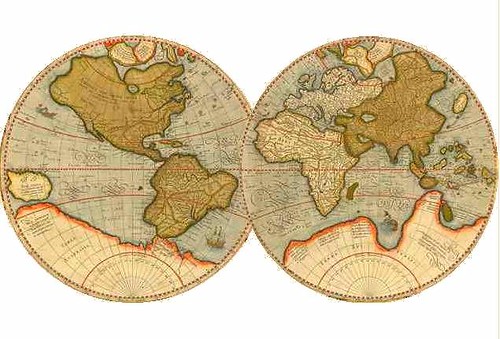
Discoverer's Day
Usually when we think of Discoverers, images of Christopher Columbus, Lewis and Clark, Marco Polo and other explorers come to mind. But these men and many others who traversed the land and seas in search of new lands not only discovered another continent, the American West, or the Far East but also the foods that grew there. The discovery of foods was critical for the creation and survival of civilization. Explore Splendid Palate and discover your new favorite food.
"The discovery of a new dish does more for human happiness than the discovery of a new star."
Jean-Anthelme Brillat-Savarin, The Physiology of Taste (1825)
Pre-historic man not only discovered many of the foods that we eat today but also ways to cook these foods. The quest for survival propelled man to discover ways to capture wild game, preserve fire, forage for food, cultivate food and raise livestock. Early man learned quickly that it was easier to hunt and gather in groups. Thus the first communities were founded and civilization as we know it was beginning to form.
Early man was nomadic, moving from place to place in pursuit of food. 800,000 years ago man was able to contain fire, thus they would be able to cook small animals they were able to capture; making them digestible, palatable, and/or sanitary. The bow and arrow was invented 10,000 years ago, facilitating the hunting of larger game, which could feed a larger community and could last longer if preserved right. Since, man no longer needed to move as often, agriculture began to develop. Agrarian society altered the path humans were to take forever. Man no longer had to move as the seasons dictated to find animals and wild berries and grains. Thus, wheat and other grains could be cultivated and stored over the winter. In essence, wild plants had to be domesticated so that they could be planted in a contained area and harvested annually. Grains were among the first plants to be cultivated. Lentils, dates, walnuts, and beans were cultivated later, between (8,000-6,000 B.C). Man had to discover a way to mill the wheat and barley so that it could be cooked into a gruel or bread otherwise it would be virtually indigestible. Various forms of cooking were developed during this time as well. Cattle, goats and sheep were domesticated since there were enough crops to feed them. These animals were used for meat, milk; bones used as utensils, stomachs as cooking vessels, skin and fur as clothing. From these small agrarian communities, villages and then cities arose. The pig was not domesticated until around 7,000 B.C. because the pig couldn’t survive even a minimally nomadic life and the pig was fed on human leftovers and not by grazing. Prior to the agrarian community, men were mainly responsible for hunting while women concentrated their efforts on gathering and cooking. In these villages and cities, there were enough people to create a division of labor that was new to civilization. Now, only a few men were required to cultivate the land and hunt but everyone still needed the fruits of their labor so commerce was developed. As rulers amassed wealth, they were able to create armies of men that would capture more land for their domain. As a result, new foods and technology were discovered thus trading between regions began.
By the Roman Period, trade became fully developed and many foods were imported around the world. Also more foods were cultivated and more animals were domesticated and thus many more foods were being discovered around the world. Spices were the most highly prized commodities, propelling the trade industry into a highly lucrative industry. After the fall of the Roman Empire, little trade was conducted between Europe and Asia during the Middle Ages. The Moors revitalized some trade along the Mediterranean. From the 15th Century to the 20th Century there was a dramatic increase in the trading of spice, coffee, chocolate and tea. European countries were in a race to develop faster ships to reach their destinations and new sea routes that would be shorter. Wars broke out over control of regions that grew the products and colonies were formed in those areas as a result.
The Industrial Revolution brought on a whole new food industry; many new packaged products were invented. Glass jars were massed produced enabling many new foods to be packaged. Refrigeration made it possible to preserve perishable produce for long enough for people to discover new foods from around the world that they never had before. Large machinery and gas stoves rather than wood burning hearths made it possible for the mass-production of food. People were discovering new foods and new combinations of ingredients at a rate inconceivable prior to the Industrial Revolution. Today, there are so many foods that one can’t possibly keep up with all the new foods. Discoverer’s day is the perfect day to try a few new foods. Forage ahead and discover what the world has to offer. You may not be discovering a creek in the Amazon but you will be expanding your horizons in your very own kitchen.
Food Timeline:
Prehistoric: Salt is discovered
Prehistoric: Fish are caught
Prehistoric: Rice is discovered
800,000 years ago: Man controls fire
10,000 years ago: Bow and arrow invented in Europe
10,000 years ago: Sheep domesticated in Near East
10,000 years ago: Sheep domesticated in Near East
10,000 years ago: Goat domesticated in Persia
6,000 years ago: Sail propelled boats used in Egypt
5,500 years ago: Wheel invented in Sumer
5,000 years ago: Plow is invented in the Near East
5,500 years ago: Potatoes cultivated in South America
4,000 years ago: Chicken domesticated in the Indus valley
2,700 years ago: Rome is founded
17,000 B.C.: Emmer Grain is gathered
10,000 B.C.: Agriculture begins
10,000 B.C.: Bread is created
8,000 B.C.: Lentils are cultivated
7,000 B.C.: Pigs are domesticated
7,000 B.C.: Walnuts and beans are cultivated
6,000 B.C.: Dates and Maize are cultivated
6,000 B.C.: Cheese is discovered
5,500 B.C.: Honey and sugar is discovered
5,500 B.C.: Chickpeas are cultivated
5,000 B.C.: Olive Oil is discovered
5,000 B.C.: Squash is cultivated
4,000 B.C.: Grapes are cultivated
4,000 B.C.: Oranges are cultivated
3,200 B.C.: Chickens are domesticated
3,000 B.C.: Peas, Fava Beans, Onions, Carrots are cultivated
3,000 B.C.: Many spices and tea is discovered
1,500 B.C.: Chocolate is discovered
850 B.C.: Celery is cultivated
500 B.C.: Artichokes are cultivated
500 B.C.: Sausages and pasta are created
300 B.C.: Bananas are cultivated
100 A.D.: The Romans invent cheesecake, ice cream and flan
800 A.D.: Codfish is discovered
1482: Columbus discovers America bringing Potatoes, Corn,
Tomatoes, Peppers, and peanuts to Europe.
1495: Marmalade is invented
1550: Pancakes are invented
1700: Shortbread is invented
1756: Mayonnaise is invented in England
1762: The sandwich is invented in England
1767: Man-made soda water is invented in England
1767: Grapes are introduced to California
1796: Pumpkin pie is invented in New England
1856: Condensed milk is invented
1863: Breakfast cereal is invented in America
1885: Evaporated milk is invented
1897: Jell-O is invented in America
1903: Tuna is canned
1911: Crisco is invented
1920’s: Frozen foods are created
1950’s: Many candies and Fast Foods are invented
HOLIDAY: Columbus Day
Columbus Day
In the fifteenth century most believed the world was flat and you would either fall off the edge or get eaten by monsters and if anyone dared suggest otherwise, they would be jailed. Christopher Columbus, and Italian, was one of those men who dared to propose the world may be round but fortunately he was able to be more diplomatic about voicing his viewpoint. He convinced Queen Isabella of Spain to finance the exploration of a new trade route to Asia for the spice merchants to use. Up until that time, spice merchants sailed down Africa, around the Cape of Good Hope and then continued eastward to Asia and India. He began his campaign in 1486. Isabella declared that if he were successful discovering a new route and/or conquering a new land, she would name him “Admiral of All the Ocean Seas” and one-tenth of the resources he discovered. On August 3, 1492, he departed on the Santa Maria with the Nina and the Pinta sailing beside him. Columbus and his men suffered disease and death during the voyage but on October 11, they saw a light and the next day they discovered it was coming from a new land. They had thought they reached India and called the native people “Indians” but they were informed that the island was name Guanahani. Later they sailed to what is now known as Cuba but believed it was Japan. Columbus named the land San Salvador and claimed it for Spain. Columbus died not knowing that he had discovered completely new lands.
In 1792, New York City a ceremony was held in honor of Columbus. The city of Washington was officially named the District of Columbia. In 1892, New York City erected a statue of Columbus at the start of Columbus Avenue and replicas of the Santa Maria, Nina and Pinta were displayed at the Columbian Exposition in Chicago. In 1866, it was the Italian organizations that were crucial in creating the Columbus Day celebrations and eventually Italian organization held Columbus Day celebrations across the United States. In 1905, Colorado was the first state to observe Columbus Day and other states followed suite in the next years. President Franklin Roosevelt proclaimed October 12 as Columbus Day in 1937. Then in 1968, President Johnson, declared that Columbus Day would be a National holiday celebrated every second Monday in October. The day is also set aside to celebrate all Discoverers.
In the fifteenth century most believed the world was flat and you would either fall off the edge or get eaten by monsters and if anyone dared suggest otherwise, they would be jailed. Christopher Columbus, and Italian, was one of those men who dared to propose the world may be round but fortunately he was able to be more diplomatic about voicing his viewpoint. He convinced Queen Isabella of Spain to finance the exploration of a new trade route to Asia for the spice merchants to use. Up until that time, spice merchants sailed down Africa, around the Cape of Good Hope and then continued eastward to Asia and India. He began his campaign in 1486. Isabella declared that if he were successful discovering a new route and/or conquering a new land, she would name him “Admiral of All the Ocean Seas” and one-tenth of the resources he discovered. On August 3, 1492, he departed on the Santa Maria with the Nina and the Pinta sailing beside him. Columbus and his men suffered disease and death during the voyage but on October 11, they saw a light and the next day they discovered it was coming from a new land. They had thought they reached India and called the native people “Indians” but they were informed that the island was name Guanahani. Later they sailed to what is now known as Cuba but believed it was Japan. Columbus named the land San Salvador and claimed it for Spain. Columbus died not knowing that he had discovered completely new lands.
In 1792, New York City a ceremony was held in honor of Columbus. The city of Washington was officially named the District of Columbia. In 1892, New York City erected a statue of Columbus at the start of Columbus Avenue and replicas of the Santa Maria, Nina and Pinta were displayed at the Columbian Exposition in Chicago. In 1866, it was the Italian organizations that were crucial in creating the Columbus Day celebrations and eventually Italian organization held Columbus Day celebrations across the United States. In 1905, Colorado was the first state to observe Columbus Day and other states followed suite in the next years. President Franklin Roosevelt proclaimed October 12 as Columbus Day in 1937. Then in 1968, President Johnson, declared that Columbus Day would be a National holiday celebrated every second Monday in October. The day is also set aside to celebrate all Discoverers.
Saturday, October 07, 2006
RECIPE: Beet and Jicama Salad
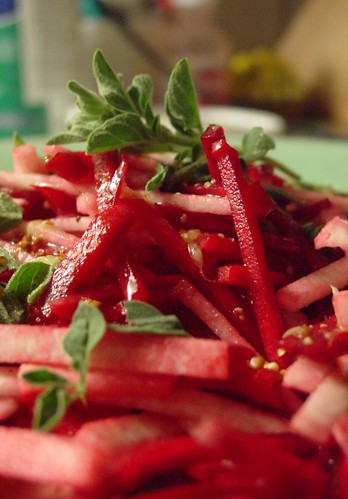
Beet and Jicama Salad
1/2 Jicama
2 large Beets
Orange juice
Rice wine vinegar
Grainy mustard
Salt
Pepper
Olive oil
Marjoram

Obviously this is not an exact recipe. But it is so simple that you really just need to go by how many people you are serving and by taste. The beets will be raw so their full flavor is not brought out. Thus, you want the vinaigrette to be fairly mild so you can taste the beets.
Since the dressing should not be overpowering, you only want a little bit of acidity. Mix the orange juice and a small amount of the vinegar in a salad bowl. Mix in the mustard, salt and pepper. Slowly drizzle the olive oil in, while stirring with a fork, to combine.
Peel the jicama and beets. Julienne both the vegetables. Add the vegetables to the salad bowl and add the marjoram. Toss to combine. Serve immediately.
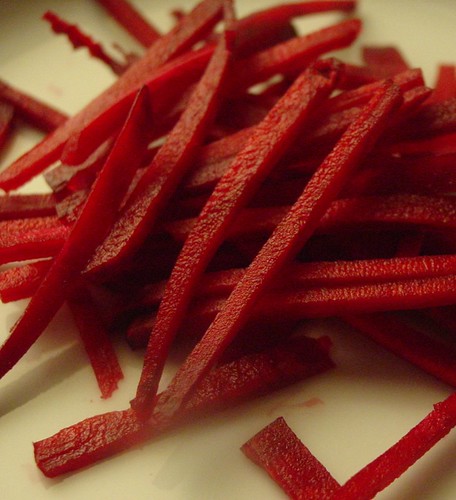
Friday, October 06, 2006
Tuesday, October 03, 2006
RECIPE: Yogurt Cheese
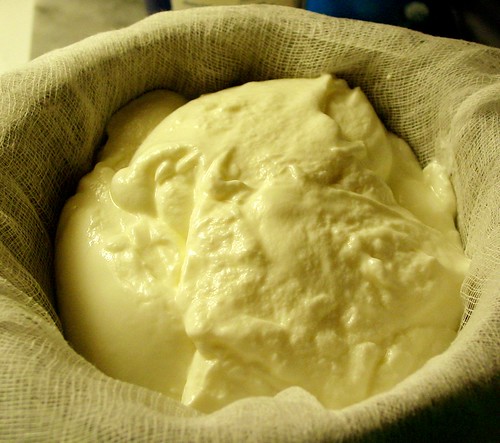
Yogurt Cheese
1 quart plain yogurt
Cut 4 layers of cheesecloth on top of each other. Place the layers in a colander and place the colander over a large bowl so that the liquid that comes out is held by the bowl but does not touch the colander. Spoon the yogurt into the cheesecloth. Gather the four corners together and twist together tightly. You can hold the twist with a twist tie or if it is long enough then tie it into a knot. Place in the refrigerator overnight so that the whey liquid can drain out into the bowl. If you can, open the cheesecloth back up and stir it up lightly and then retie. You can also press down on it slightly from time to time to help squeeze out some more whey. Don’t discard the whey because it is full of protein and nutrients. It can easily be added to soups. The consistency should be similar to a soft cream cheese.
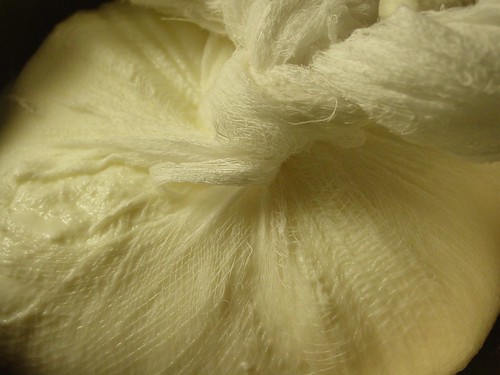
Subscribe to:
Posts (Atom)
